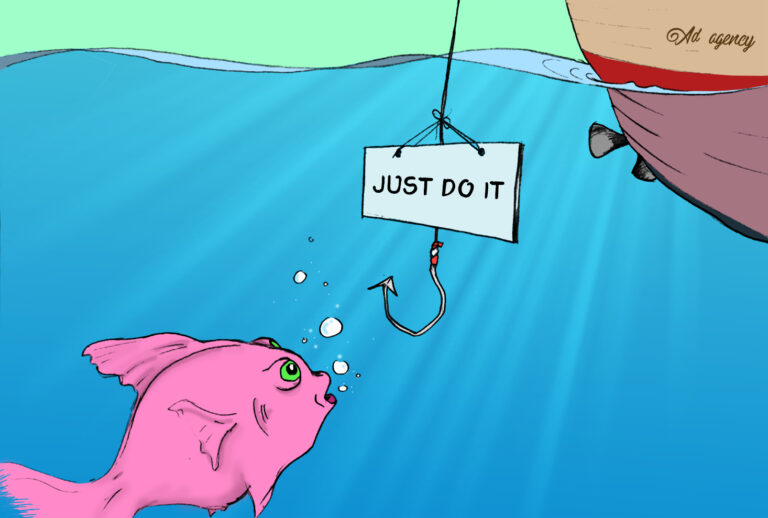Rascal Creative co-founder and Creative Director, Ben Ducker, shares his insights on how to produce content that converts and what traits you should be adopting in order to survive and evolve within an ever-changing industry…
People hate advertising.
Articles suggest that traditional advertising is no longer hitting the mark. So, how is it that ad spend is forecast to grow across 19 product categories? Simple, it’s being reborn as “content”.
But beware of the bait. Slick imagery and empty headlines can lure brands into a new direction without any real strategy to back it up.
Step 1 – Feed the beast, for less
‘The Beast’ (or social media to you and me) is becoming ever more prominent within the world of advertising Its ability to target specific demographics offers a more authentic approach to selling, meaning brands are looking to feed this beast more than ever.
Some of the world’s biggest ad spenders – Sky, P&G and BT, to name a few – have reduced their annual ad spend by $1bn to invest into smaller players, with a focus on digital content creation. This is expected to grow to $2bn over the next couple of years.
The shift in how social media advertising is being used has allowed challenger agencies, such as Rascal, work with the likes of Unilever, Next and Hewlett Packard, delivering campaigns across international markets and pitching against rival powerhouse agencies, such as DDB.
Martin Sorrell from WPP has started S4 capital which focuses on smaller agencies, content and influencer-driven work. This surely supports the feeling of insecurity surrounding the large agency model, with their mammoth budgets.
However, it’s not as simple as that. Due to the disposable nature of social content, the budgets are a fraction of traditional ATL campaigns (TV, print, etc) and so agencies need to find ways of delivering more nimble content faster and cheaper, without compromising on quality.
Diego Heinz, Head of Global Content at OnePlus comments: “Indeed, the rise of social media and the possibilities of publishing your own content disrupted the standards of traditional media. The previous walled garden was only accessible to a select few players.
“You couldn’t shoot your own film and broadcast nationwide during primetime. Now you can tell daily stories from your YouTube channel. Of course, all this freedom comes with some questionable content. As easy it is to publish, our commitment as creatives should remain the same. We must always bring our best work forward.”
Step 2 – Accessibility
Access to better technology at cheaper prices, from film equipment to 3D software, has allowed emerging creative agencies to churn out content quickly and efficiently. Brands are served great creative at a fraction of the cost charged by the ‘traditional’ agency.
Whilst this might seem appealing, there’s caution around this type of content.
These new agencies remove the lengthy processes of out-dated agencies, saving money and frustration around additional steps.
At Rascal, we embrace this style of working, offering direct access to producers, strategists and creatives for a more collaborative and efficient approach.
Step 3 – New vs Old
Clients are slashing traditional ad spends to focus on social content creation, while agencies become increasingly more agile to deliver high-quality content on ever-smaller budgets.
But here’s where traditional strategic advertising makes a comeback!
The content created is only as effective as the idea at its core, and that idea is only as good as the strategic insight. The majority of ‘content agencies’ that exist today are not born out of an advertising background, which means they end up skipping the why, jumping straight into execution.
Without understanding a brand’s ethos and culture or defining a clear market and target audience, the foundation on which to build a concept just doesn’t exist.
As a result, the final output is nothing more than good looking wallpaper. It’s style over substance and, while it might look slick, there’s no consistency to the creative wrapper that sells the message. The content is quickly forgotten and so is the brand.
To generate effective content and creative, we need to combine the traditional advertising methodology of Insight > Strategy > Creative > Execution > Measure, alongside the resourceful thinking of the content agencies who have the ability to quickly execute ambitious projects.
The agencies that will survive advertisings rebirth are those willing to evolve, merging strategic creative with big campaign thinking and a streamlined approach to execution. All whilst working collaboratively with their clients, eliminating the unnecessary elongated process. Whew.
So here’s to the rebirth of advertising.











